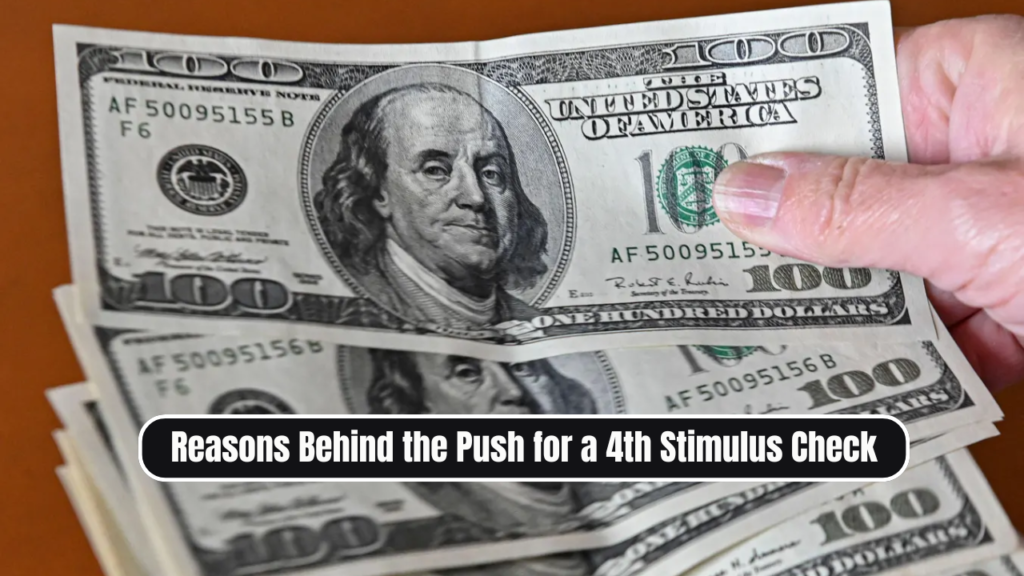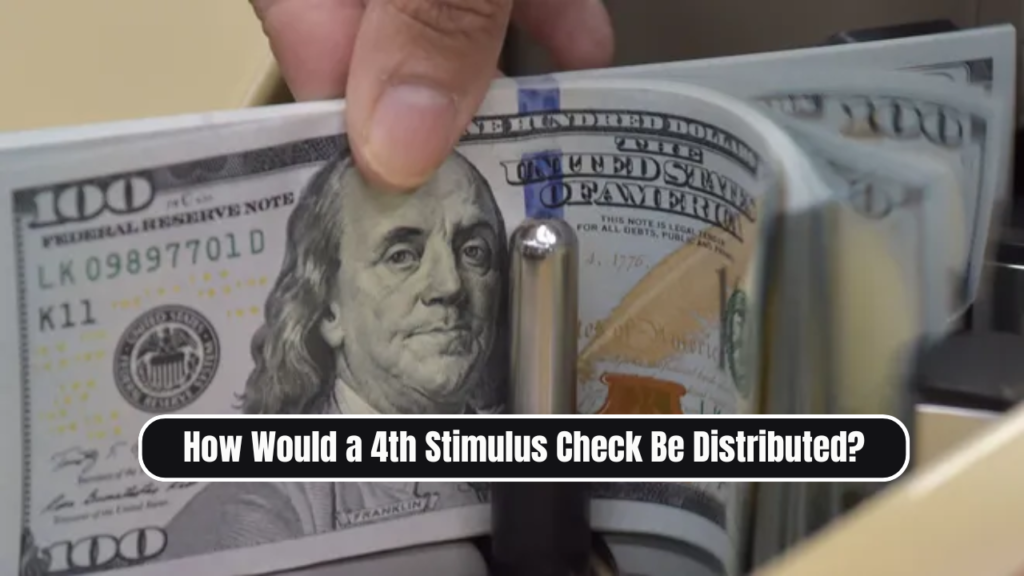As the U.S. economy continues to recover from the lingering effects of the COVID-19 pandemic, millions of Americans remain concerned about inflation, job security, and rising costs of living. In light of these issues, many citizens are asking: Is a 4th stimulus check of $2,000 coming?
The idea of a fourth stimulus payment has been circulating for some time, fueled by public demand and support from some lawmakers. While the federal government has yet to approve an official fourth round, discussions have intensified. In this comprehensive article, we will break down all aspects of the proposed $2,000 4th stimulus check, including potential eligibility, timelines, the political backdrop, and what you can do to prepare.
Background and History of Stimulus Checks
To understand the context of the fourth stimulus check, it’s essential to look back at the previous rounds:
First Stimulus Check
- Amount: $1,200
- Date: March 2020
- Under: CARES Act
- Target: Adults earning up to $75,000 and families
Second Stimulus Check
- Amount: $600
- Date: December 2020
- Under: COVID-related Tax Relief Act
- Target: Same eligibility with slight adjustments
Third Stimulus Check
- Amount: $1,400
- Date: March 2021
- Under: American Rescue Plan
- Target: Expanded eligibility, including dependents
These three checks helped millions of Americans navigate layoffs, reduced income, and health-related costs. Calls for a fourth round aim to extend this financial lifeline.

Reasons Behind the Push for a 4th Stimulus Check
- Inflation: Rising prices for groceries, gas, rent, and healthcare have placed additional burdens on low- and middle-income households.
- Unemployment & Underemployment: Although unemployment numbers have improved, many Americans are underemployed or in unstable gig work.
- Pandemic Recovery Delays: COVID variants continue to affect workforce participation and healthcare demands.
- Childcare Crisis: Parents face difficulties balancing jobs with childcare, especially where remote learning or sick days are involved.
- Popular Support: Petitions for recurring payments—like the one launched on Change.org—have garnered millions of signatures.
Current Status of the $2,000 4th Stimulus Check
At the time of writing, no official legislation has been passed to authorize a fourth stimulus payment. However, lawmakers, advocacy groups, and citizens continue to push the issue.
Key Supporters
- Senator Bernie Sanders: Advocated for recurring payments.
- Representative Ilhan Omar: Introduced proposals for monthly checks.
- Economic Security Project: A nonprofit that supports guaranteed income.
White House Position
While the Biden administration has focused more on long-term economic packages, such as the Build Back Better Plan and infrastructure bills, it has not ruled out additional relief.
State-Level Stimulus
Some states, including California, New York, and Colorado, have initiated their own programs offering residents state-funded relief checks.
Who Might Qualify for the $2,000 4th Stimulus Check?
Eligibility for any federal stimulus payment typically depends on income, tax filing status, and other financial circumstances.
| Criteria | Likely Requirement |
|---|---|
| Income Cap | Under $75,000 (individual), $150,000 (married) |
| Tax Status | Must have filed 2021 or 2022 taxes |
| Citizenship | U.S. citizen or legal resident |
| Dependents | May qualify for additional payments |
Low-income families, the unemployed, seniors on fixed incomes, and essential workers may be prioritized.
What You Can Do Now to Prepare
Even without an official announcement, it’s wise to stay prepared.
- File Your Taxes: Ensure your tax filings are up to date.
- Check IRS Portal: Update banking and mailing info.
- Track Legislative Updates: Follow news from trusted sources and government websites.
- Build an Emergency Fund: Set aside savings if possible.
Economic Impact of Previous Stimulus Payments
Numerous studies have shown that stimulus checks:
- Boost consumer spending
- Help pay for essential needs like food, rent, and utilities
- Support small businesses through increased demand
A fourth payment could provide similar economic benefits, especially during inflationary periods.
Challenges to Passing a 4th Stimulus Check
- Political Gridlock: Bipartisan support is necessary but hard to achieve.
- Federal Budget Concerns: Inflation and the national debt complicate funding.
- Focus on Other Programs: Congress has shifted attention to infrastructure and tax credits.
- Mixed Economic Signals: Some economists argue the economy is recovering sufficiently.
State-Level Relief Alternatives
If a federal check doesn’t materialize, your state may offer localized relief. Here’s a quick look:
| State | Program Name | Amount |
| California | Golden State Stimulus | $600–$1,200 |
| Colorado | TABOR Refunds | $750–$1,500 |
| New Mexico | Emergency Rebates | $500–$1,000 |
| New York | Excluded Workers Fund | Up to $15,600 |
| Oregon | One-Time Assistance | $600 |
Check your state’s Department of Revenue for eligibility details.

How Would a 4th Stimulus Check Be Distributed?
If approved, the IRS would likely use the same method as previous checks:
- Direct Deposit: Fastest method, requires updated banking info.
- Paper Check: Mailed to your home address.
- EIP Card: Prepaid debit card sent to recipients without bank accounts.
It’s crucial to ensure your contact details with the IRS are current.
Pros and Cons of Another Stimulus Check
Pros
- Direct financial relief
- Boosts consumer spending
- Reduces financial insecurity
Cons
- Adds to national debt
- Risk of fueling inflation
- May not be evenly distributed
How Would the $2,000 Amount Help?
Here’s how an average household might allocate the funds:
| Expense | Estimated Amount |
| Rent/Mortgage | $900 |
| Food & Groceries | $300 |
| Utilities | $200 |
| Debt Repayment | $300 |
| Transportation | $150 |
| Savings | $150 |
Total: $2,000
This table demonstrates that the payment could make a substantial difference in a single month.
What Experts Are Saying
Economists
Some experts suggest that another check could help with short-term inflation relief, while others warn it might exacerbate inflation.
Public Policy Advocates
Supporters argue that direct cash transfers are one of the most effective forms of relief, especially for vulnerable groups.
Long-Term Alternatives to Stimulus Checks
While a one-time payment provides immediate relief, many experts recommend more sustainable solutions:
- Universal Basic Income (UBI)
- Expanded Child Tax Credit
- Higher Minimum Wage
- Affordable Housing Initiatives
These options aim to build economic resilience over time.
Conclusion
The discussion around the $2,000 fourth stimulus check reflects the ongoing challenges Americans face in a recovering yet uncertain economy. While no final decision has been made, the pressure on lawmakers continues to grow. Whether through federal or state-level support, one thing is clear—many Americans still need help. Keeping informed, staying financially prepared, and understanding your eligibility can ensure you’re ready if and when new stimulus relief arrives.
FAQs
1. Is the $2,000 4th stimulus check approved yet?
No, as of now, it has not been officially approved by Congress or the White House.
2. Who would be eligible for the fourth stimulus check?
Likely the same groups as before—individuals earning under $75,000, joint filers under $150,000, and those with dependents.
3. How can I check if I qualify?
Stay updated through the IRS website and ensure your tax information is up to date.
4. Will there be more stimulus checks in the future?
It’s possible, depending on economic conditions and political will. Some experts advocate for recurring payments.
5. What if I never received a previous stimulus payment?
You can claim the Recovery Rebate Credit when you file your federal tax return.



